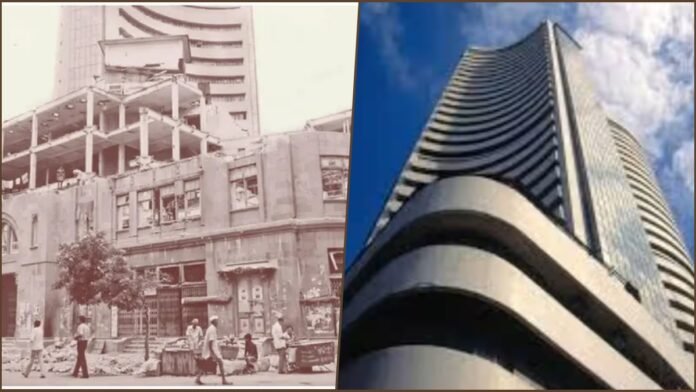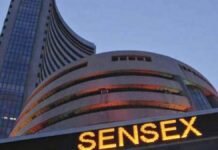
Key Points
- BSE marks 150 years since its founding on July 9, 1875, making it Asia’s oldest stock exchange.
- Origins date back to 1855, when traders gathered under a banyan tree in Mumbai to trade cotton.
- BSE predates the Tokyo Stock Exchange by three years and has been a pioneer in India’s financial evolution.
- Over 4,100 companies listed; market capitalization exceeds ₹461 lakh crore.
- Sensex milestones: Launched in 1986, the index crossed 1,000 in 1990, 5,000 in 1999, 20,000 in 2007, and 80,000 in 2024.
- BSE has weathered market scandals, regulatory reforms, and technological revolutions.
Mumbai: The story of the Bombay Stock Exchange (BSE) began in 1855, when a handful of brokers would meet under a sprawling banyan tree near Mumbai’s Town Hall to trade cotton, shares, and government securities. As the number of traders swelled, the need for a formal association became evident. On July 9, 1875, the Native Share and Stock Brokers Association was established with 318 founding members each paying an entry fee of just one rupee. This association would later evolve into the BSE, setting the stage for the organized stock market in India.
Asia’s Oldest, India’s First
BSE’s official establishment in 1875 made it Asia’s first stock exchange, three years before the Tokyo Stock Exchange. Among its visionary founders was Premchand Roychand, famously known as the “Cotton King of Bombay.” The exchange rapidly became the nerve center for India’s burgeoning capital markets.
Building a Landmark: The Rise of PJ Towers
- 1928: BSE acquires its current plot of land in Mumbai’s Dalal Street.
- 1930: Construction of the first dedicated BSE building begins.
- 1970: The iconic PJ Towers, named after former chairman Feroze Jamshedji Jeejeebhoy, is completed. Jeejeebhoy led BSE through a period of modernization from 1966 to 1980.
- 1957: BSE receives official recognition under the Securities Contract (Regulation) Act (SCRA) post-independence, cementing its role as India’s primary stock exchange.
Sensex: Charting India’s Economic Growth
BSE introduced India’s first stock index, the Sensex, in 1986 with a base value of 100. The Sensex has since become a barometer of India’s economic health, witnessing several historic milestones:
| Year | Sensex Milestone |
|---|---|
| 1990 | 1,000 |
| 1999 | 5,000 |
| 2007 | 20,000 |
| 2024 | 80,000 |
Today, the BSE lists over 4,100 companies, and its market capitalization has soared beyond ₹461 lakh crore, placing it among the world’s largest exchanges.
Navigating Scandals and Reforms
BSE’s long history has not been without controversy. The exchange has weathered multiple high-profile scams and manipulations, particularly in the small-cap and penny stock segments. Regulatory interventions by the Securities and Exchange Board of India (SEBI) have led to bans and stricter oversight, helping restore investor confidence and enhance transparency in India’s capital markets.
BSE’s Global Impact and Legacy
- Pioneered electronic trading in India, setting benchmarks for modernization.
- Catalyst for economic growth, providing vital capital for Indian enterprises.
- Role model for emerging markets in Asia and beyond.













































